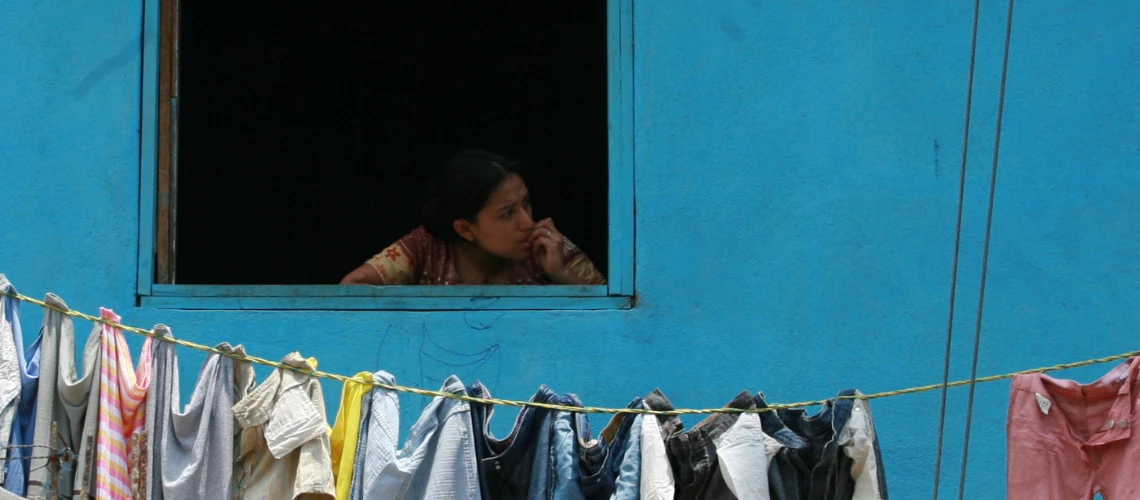 Joven mirando por la ventana en Quiche, Guatemala.
Joven mirando por la ventana en Quiche, Guatemala.
Originally published in El País
Curfews, troops on the streets, gunmen in a TV studio – the images coming from Ecuador two weeks ago were a stark reminder that violence and organized crime are visibly present in Latin America and the Caribbean (LAC). Yet missing in the debate is how this violence links to development.
Latin America and the Caribbean is the most violent region of the world, and violence keeps rising . The number of homicides per person in LAC is five times higher than North America, and 10 times than in Asia. The region has nine percent of the global population and one-third of the world’s total deaths by homicide .
Violence is a major impetus for migration. Medecins Sans Frontieres notes that while economic incentives are a push factor, violence plays a decisive role in the decision to migrate to the United States from Central America. Violence also amplifies pre-existing inequality. Victims are overrepresented among the most disadvantaged: the poor, youth, ethnic minorities, and LGBT+ groups.
Social and domestic violence are widespread, particularly affecting women. Political violence, including violent protests, police brutality, extra-judicial killings, violent repression of protests, and violence against human rights defenders, environmental activists, politicians, and journalists is also frequent. However, since the early 2000s, organized crime is the primary source of violence in LAC.
The situation is disheartening, as are those statistics showing the region’s mediocre growth, low productivity, and high levels of inequality. Yet we fail to make the connections: there is evidence that more unequal societies are more violent, and societies torn by violence cannot achieve the higher growth rates to provide jobs, end poverty, and reduce inequality .
Violence depresses economic growth in various ways. When violence threatens property rights, it affects investment decisions. One study shows that in Colombia, when the peace agreement seemed imminent, more businesses were created. This stopped when the agreement was rejected in a national referendum.
Faced with crime and violence, governments spend more on security and less on development; violence destroys human capital affecting the labor market and damages societies by lowering productivity.
In 2012, a World Bank report showed that in six countries of the region, the estimated cost of violence was 8 percent of Growth Domestic Product (GDP) ; a 10 percent reduction in violence would lead to a one percentage point increase in annual economic growth in the two most violent countries.
Violence weakens state capacity, making it more vulnerable and less able to take the measures to defend itself. In extreme cases, violence can undermine sovereignty and independence.
While no single policy solution will magically eradicate violence, there are policy priorities identified and areas in which we need better knowledge to improve policy design. A World Bank report published in 2016 thoroughly reviews impactful crime prevention policies and programs that can prevent youth violence and have been effective at reducing gang affiliation. This report, and the one mentioned above, underscore prevention as a policy priority and the importance of evidence for policy design. Vibrant economies that offer jobs will help lure young people out of crime, so economic growth itself would count as crime prevention. But there is the challenge of turning on the motors of economic growth amid violence and crime.
The region needs well-funded police and judiciary systems protected from capture by criminal organizations, programs to address the mental health of victims and repair the social fabric, better systematic data collection to understand patterns of violence from organized crime and identify promising policy interventions. It also needs to start a conversation exploring the possible routes to contain organized crime violence, which holds the region back and impedes Latin American and Caribbean people from having a better life. Problems of supranational character require coordinated solutions that go beyond national borders.
This column calls on governments, academia, the private sector, civil society, and the international community to recognize the urgent need to act and join forces to face together the monster that stalks Latin America and the Caribbean.


Join the Conversation